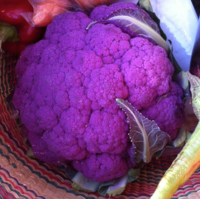
Photo from wikipedia
Seed microbiota influence germination and plant health and have the potential to improve crop performance, but the factors that determine their structure and functions are still not fully understood. Here,… Click to show full abstract
Seed microbiota influence germination and plant health and have the potential to improve crop performance, but the factors that determine their structure and functions are still not fully understood. Here, we analysed the impact of plant‐related and external factors on seed endophyte communities of 10 different oilseed rape (Brassica napus L.) cultivars from 26 field sites across Europe. All seed lots harboured a high abundance and diversity of endophytes, which were dominated by six genera: Ralstonia, Serratia, Enterobacter, Pseudomonas, Pantoea, and Sphingomonas. The cultivar was the main factor explaining the variations in bacterial diversity, abundance and composition. In addition, the latter was significantly influenced by diverse biotic and abiotic factors, for example host germination rates and disease resistance against Plasmodiophora brassicae. A set of bacterial biomarkers was identified to discriminate between characteristics of the seeds, for example Sphingomonas for improved germination and Brevundimonas for disease resistance. Application of a Bayesian community approach suggested vertical transmission of seed endophytes, where the paternal parent plays a major role and might even determine the germination performance of the offspring. This study contributes to the understanding of seed microbiome assembly and underlines the potential of the microbiome to be implemented in crop breeding and biocontrol programmes.
Journal Title: Microbial Biotechnology
Year Published: 2022
Link to full text (if available)
Share on Social Media: Sign Up to like & get
recommendations!